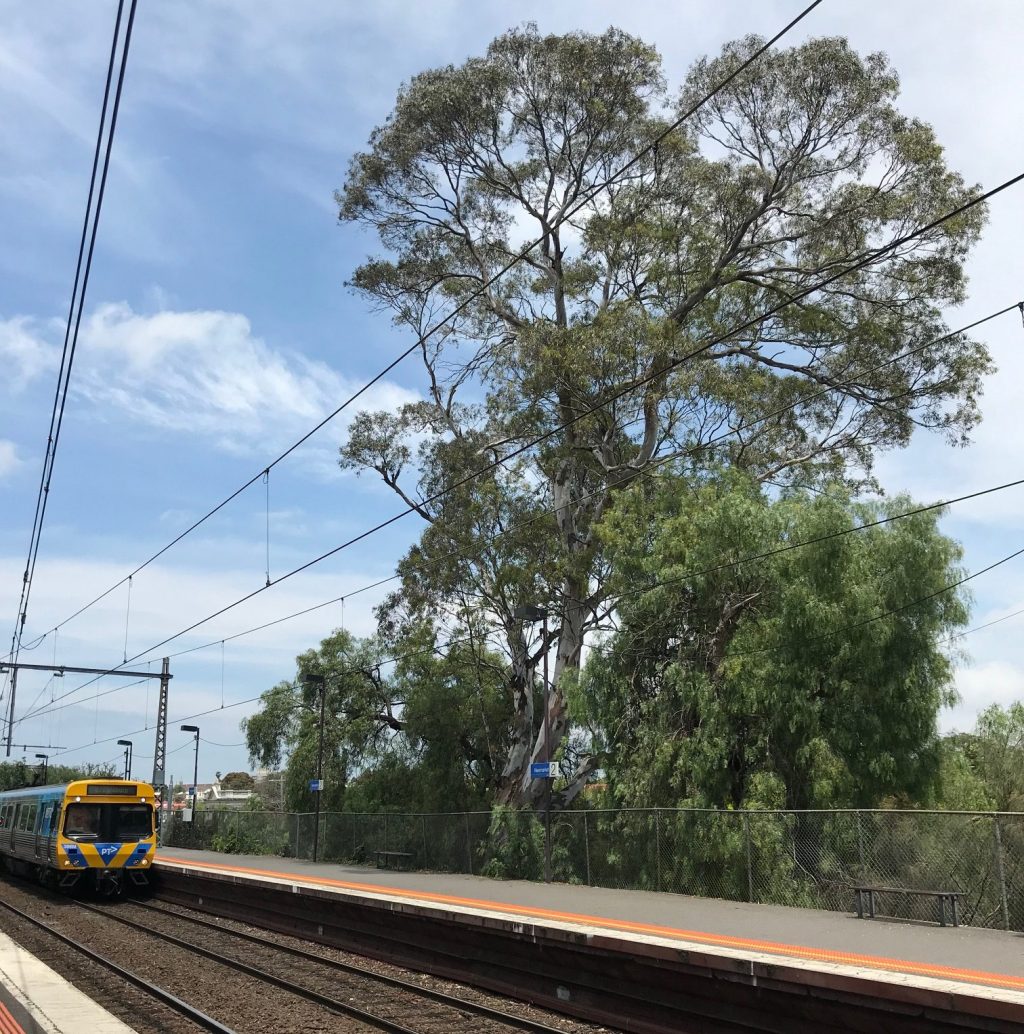National Trust Opposes Removal of Trees at Newmarket Station (Update: Trees Saved!)

UPDATE: March 27 2020
Moonee Valley Council has announced it will work with Metro Trains to save the heritage-listed river red gum and a peppercorn tree, working around the trees while they make safety upgrades to Newmarket station. One pittosporum tree will be removed under the Rail Management Act, and Metro Trains will apply for planning approval to remove any other trees at the station. Congratulations to Moonee Valley Council and the community for their hard work standing up for due process and heritage protections.
For more information see here.
January 23 2020
The National Trust of Australia (Victoria) has urgently called on the Premier, the Transport Minister and Metro Trains to halt plans to remove 10 trees at Newmarket Railway Station over the Australia Day weekend, including a 100+ year old River Red Gum, protected by the Moonee Valley planning scheme.
The mature trees at Newmarket train station provide a tangible link to the development of the area as a centre of local activity, particularly since the 1920s. They are part of the Victorian Railways garden that was created at this time, one of many impressive and well-maintained gardens across the rail network. The trees at Newmarket include Pepper trees (Schinus molle), a River Red Gum (Eucalyptus camaldunlensis), and a large Elm (Ulmus sp.), all of which are slated for removal this weekend.
We are deeply concerned about the lack of transparency around the decision to remove the trees, which we first opposed in 2018. We were invited to meet with representatives of Metro Trains earlier this week, who advised that the Department of Transport has sought independent arboriculture and engineering advice on a number of options including the retention of the trees, but that removal was found to be unavoidable. This is despite a 2018 independent arborist report commissioned by Moonee Valley Council, which found that the River Red Gum presented a low risk of harm and that it was entirely feasible to retain the tree while repairing or retaining the adjacent existing wall. We have requested access to the Department of Transport’s reports in order to independently review the findings, however this information has not been made available to us.
This latest threat at Newmarket Station comes after the controversial removal of a Cork Oak at Lilydale Station, despite several years of advocacy by the National Trust and community members for the protection of the tree. This speaks to a broader problem in the management of significant trees across the railway network, and on other Government-owned land.
At a time when we are seeing widespread environmental destruction across the state, and extreme weather events are becoming more frequent, protecting our urban forest is paramount. Research by AECOM for the City of Melbourne clearly outlines the detrimental impacts of the Urban Heat Island Effect on health, infrastructure, and the economy. It is incumbent on Government and the agencies that manage Victoria’s assets to show leadership on the custodianship of our environmental heritage.
The National Trust does not seek to oppose tree removals that can be demonstrated to be completely unavoidable due to immediate public safety risks or demonstrable and significant public benefit, however we do not believe this has been adequately demonstrated. The National Trust has called on Metro Trains to look holistically at the management of significant trees and environmental heritage assets across the network. We have also appealed to Premier Daniel Andrews, Minister Jacinta Allen, and Member for Essendon Danny Pearson to halt the works, so discussions with Council and the community can continue.
Extract from Economic Assessment of the Urban Heat Island Effect, prepared by AECOM for the City of Melbourne, 2012
The impacts of this additional hot weather within the City is expected to produce a range of impacts on health, transport operation and infrastructure, energy demand and infrastructure, trees and animals, and crime. The vast majority of this economic impact is as a result of heat-related deaths, reflecting the dangerous effect that extreme temperatures can have on human life (particularly the elderly and disadvantaged), the increasing number of such events as a result of climate change (and hence increasing number of heat-related deaths), and importantly, the high value that society places on preventing the loss of a human life. The economic cost of increased energy demand in the warmer months is offset by the benefits of reduced energy demand due to warmer condition that the UHI creates during colder winter months. The total economic cost to the community due to hot weather is estimated to be approximately $1.8 billion in present value terms. Approximately one-third of these impacts are due to heatwaves. Of the total heat impact, the Urban Heat Island effect contributes approximately $300 million in present value terms.
+ There are no comments
Add yours